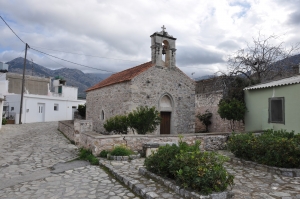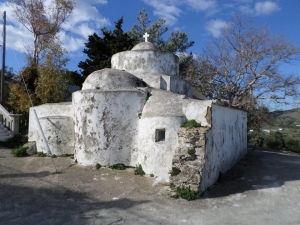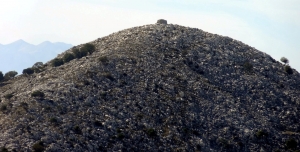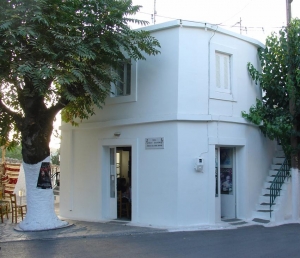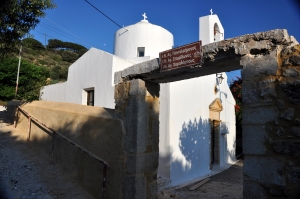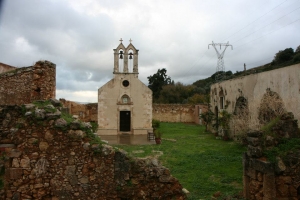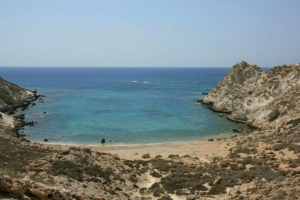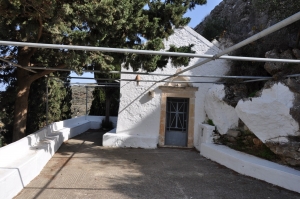Ο ναός του Αγίου Γεωργίου στην Έμπαρο, στο κέντρο του χωριού, αποτελεί το σημαντικότερο Βυζαντινό Μνημείο της ευρύτερης περιοχής. Ο ναός κτίστηκε το 1436 και φέρει τοιχογραφίες παλαιολόγειας τεχνοτροπίας του Μανουήλ Φωκά.
At the cemetery of Lousakies we meet the Byzantine temple dedicated to Saints Polikarpos, Charalambos and Nicholas. The temple is of the type cruciform with a narthex in front. Its interior bears frescoes from the Venetian era.
Ο Τίμιος Σταυρός ή Κουλούκωνας (1076μ) αποτελεί τη δεύτερη ψηλότερη κορυφή των Ταλαίων Ορέων μετά τον Κουτσοτρούλη (1084μ). Στην κορυφή είναι κτισμένος ο ναός του Τιμίου Σταυρού και η πρόσβαση γίνεται από τα Απλαδιανά μέσω χωματόδρομου αρχικά και στη συνέχεια από μονοπάτι.
Деревня Аногия расположена на Северном склоне горы Псилоритис на высоте 740 метров, которые возвышаются на 740 метров. Вы можете взглянуть дом Никоса Ксилуриса, который славился своим особенным голосом, и традиционной музыки.
Ο ναός του Αγίου Παντελεήμονα κοντά στα Νωπήγεια είναι τετράστυλος σταυροειδής ναός του 14-15ου αιώνα και αποτελεί ένα από τα μεγαλύτερα προσκυνήματα στην περιοχή της Κισάμου. Είναι αφιερωμένος στον Άγιο Παντελεήμονα, στον Άγιο Σπυρίδωνα και στον Άγιο Χαράλαμπο.
Поблизости с провинцией Периволия, в Ханье, вы найдете заброшенный и почти неизвестный монастырь Святого Георгия Хародия. Монастырь был построен в XII веке местным богатым землевладельцем Ханьи. Монастырь был мужским до середины XX века, когда он был покинут. Сегодня здесь вы все еще сможете найти монашьи кельи и церковь Св. Георгия.
Στο δυτικότερο σημείο του Κουφονησίου, βόρεια από τους γκρεμούς της Χιλιαδερφιάς και νότια του Άσπρουγα, σχηματίζεται μια υπέροχη απόμερη παραλία. Λόγω της θέσης της στο δυτικό άκρο του νησιού, ονομάζεται Πλευρό.
Το τέλος του 19ου αιώνα ο μοναχός Γέωργιος Κωσταντουλάκης, γνωστός κι ως Μωυσής, κατέφυγε σε μια απόμερη τοποθεσία κοντά στο χωριό Βορρού, όπου ασκήτευσε μέσα σε μικρό σπήλαιο. Με τον καιρό διαμόρφωσε το χώρο, κτίζοντας το ναό της Αγίας Κυριακής, ένα κελί και βοηθητικούς χώρους.











